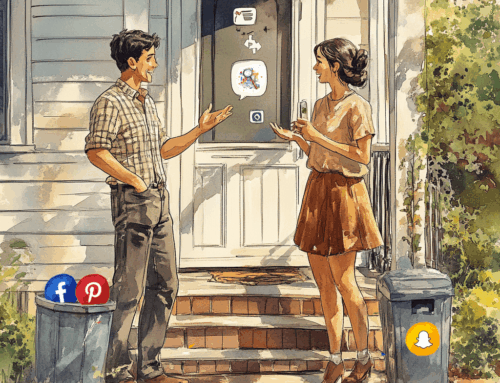Simple steps for small business owners who want to show up in local search results
Google Ads can be one of the fastest ways to get your business in front of local customers who are actively searching for what you offer. But let’s be honest — the platform isn’t exactly beginner-friendly.
Between the dashboards, jargon, and endless options, it’s easy to feel overwhelmed before your first ad even launches. This article breaks things down in plain language, so you can try running your own ads with a little more confidence.
What Are Google Ads (And What Are You Paying For)?
At the most basic level, Google Ads let you show up at the top of search results when someone types in a keyword that’s relevant to your business.
You’re not paying for views — you’re paying when someone clicks on your ad. That’s why it’s called Pay-Per-Click, or PPC.
There are lots of different types of Google Ads (like Display ads and YouTube ads), but for beginners, Search Ads are the most straightforward. These are the plain-text ads that appear in Google’s search results.
Key Terms You’ll See Right Away
- CPC (Cost Per Click): How much you’re paying each time someone clicks on your ad.
- Impressions: How many people saw your ad.
- CTR (Click-Through Rate): The percentage of people who clicked on your ad after seeing it.
- Keywords: The search terms you want your ad to show up for.
- Match Types: Controls how closely the search needs to match your keyword.
- Broad Match (most flexible)
- Phrase Match (moderate)
- Exact Match (very specific)
- Negative Keywords: Words or phrases you don’t want your ad to show up for. These help filter out bad clicks.
Beginner Strategy: Keep It Simple and Local
1. Start With 10–20 Keywords
Choose broad match keywords related to your core service or product. Google will show your ad for related terms and variations. Don’t overthink this part — start with general terms your customers are likely to search for.
2. Write Ads That Include Some of Your Keywords
Google lets you write up to 15 different headlines and 4 descriptions per ad. These will be rotated and mixed automatically to find what performs best.
- Top 3–5 headlines are the most likely to show up, so make those your strongest.
- Avoid punctuation, over-capitalization, or hype words like “Best,” “Awesome,” or “Cheap.” Google may flag or disapprove ads that sound overly promotional.
- If messaging matters to you (and it should), fill out every field — that gives you more control over what’s shown.
3. Link to a Dedicated Page
Your ad should lead to a landing page or specific product/service page — not your homepage. Make sure the keywords used in your ad also appear on that page for better performance and relevancy.
4. Use Sitelinks
Sitelinks are a must. These are extra links that show up below your ad and drive traffic to supporting pages.
- Contact
- Location or Directions
- Services or Products
- About Us
- Testimonials or FAQs
Need Help Taking It Further?
Running your first Google Ads campaign is a great first step — but if you’re ready to explore more advanced targeting, conversion tracking, or campaign scaling, I can help.
Reach out anytime at 215-825-6992 or seigfriedalex@gmail.com.
I work with small businesses, nonprofits, and local teams who want results without the guesswork.




